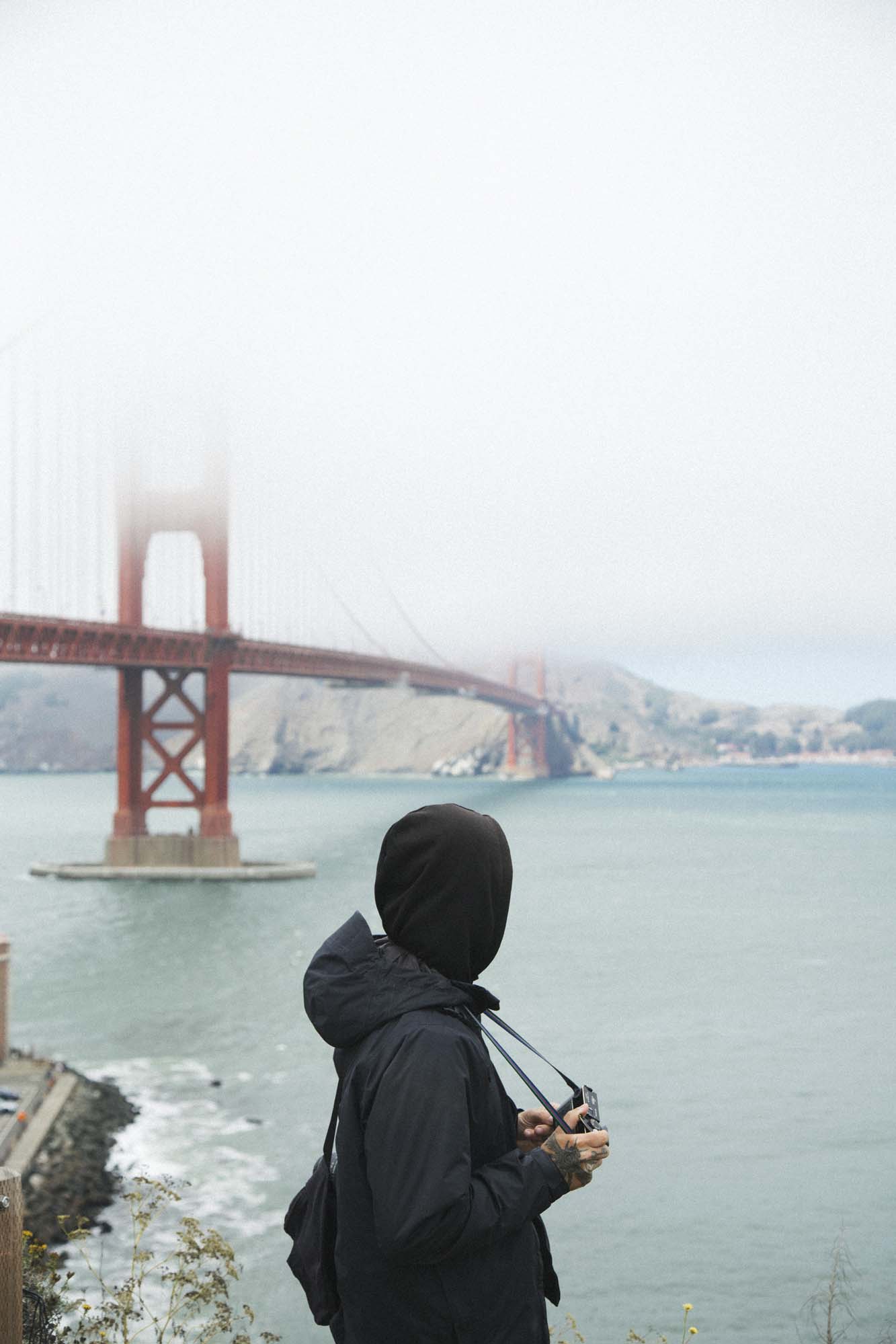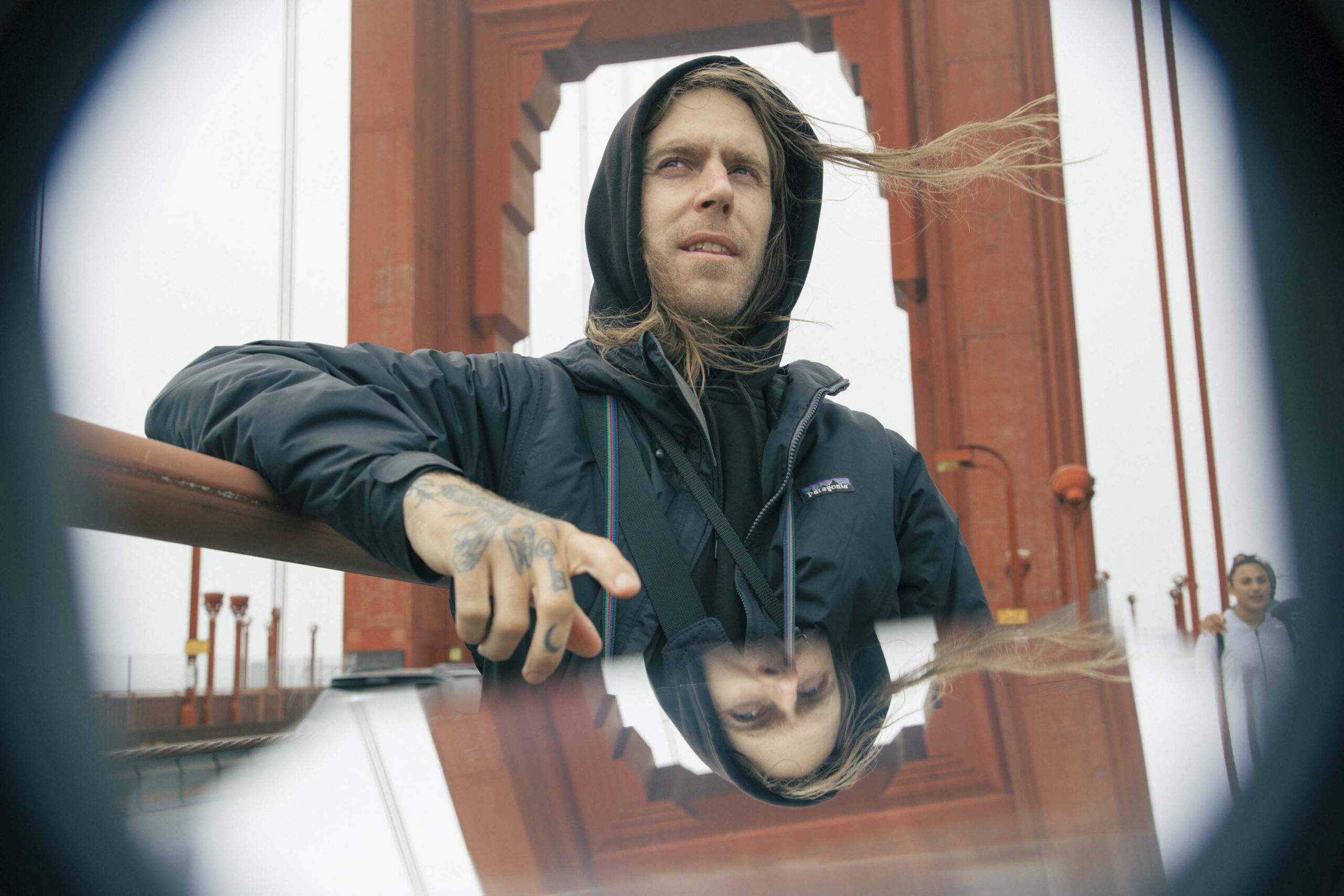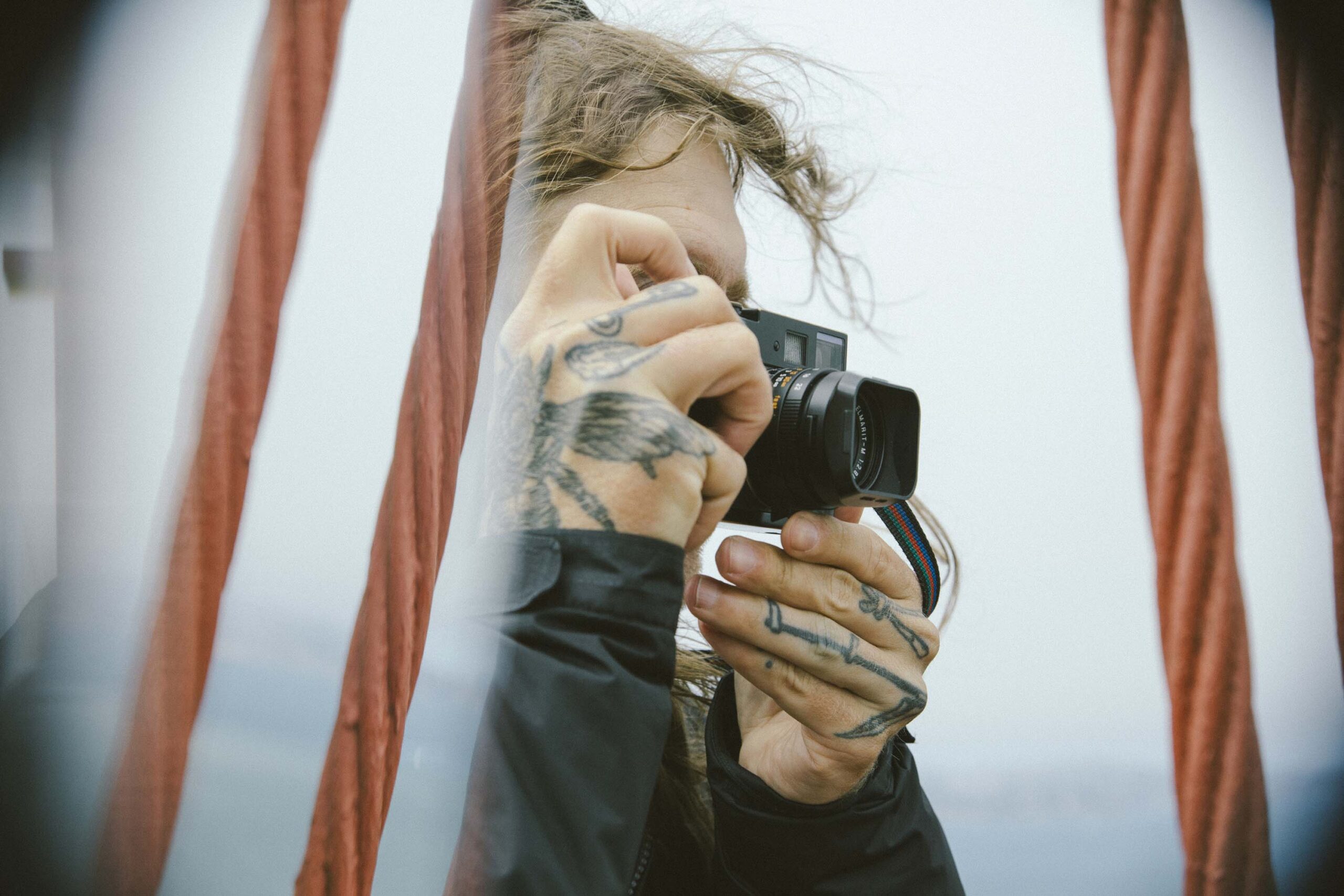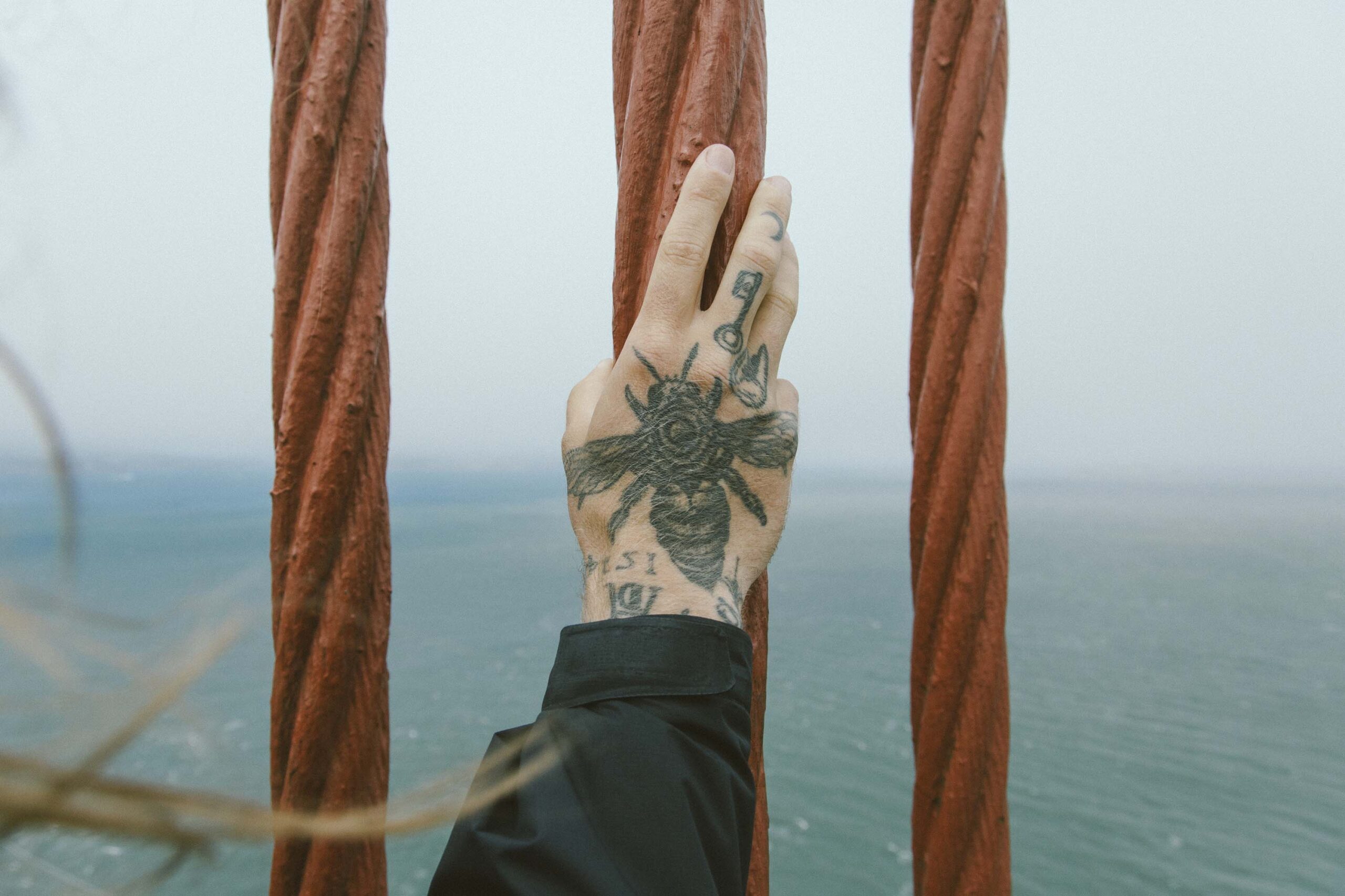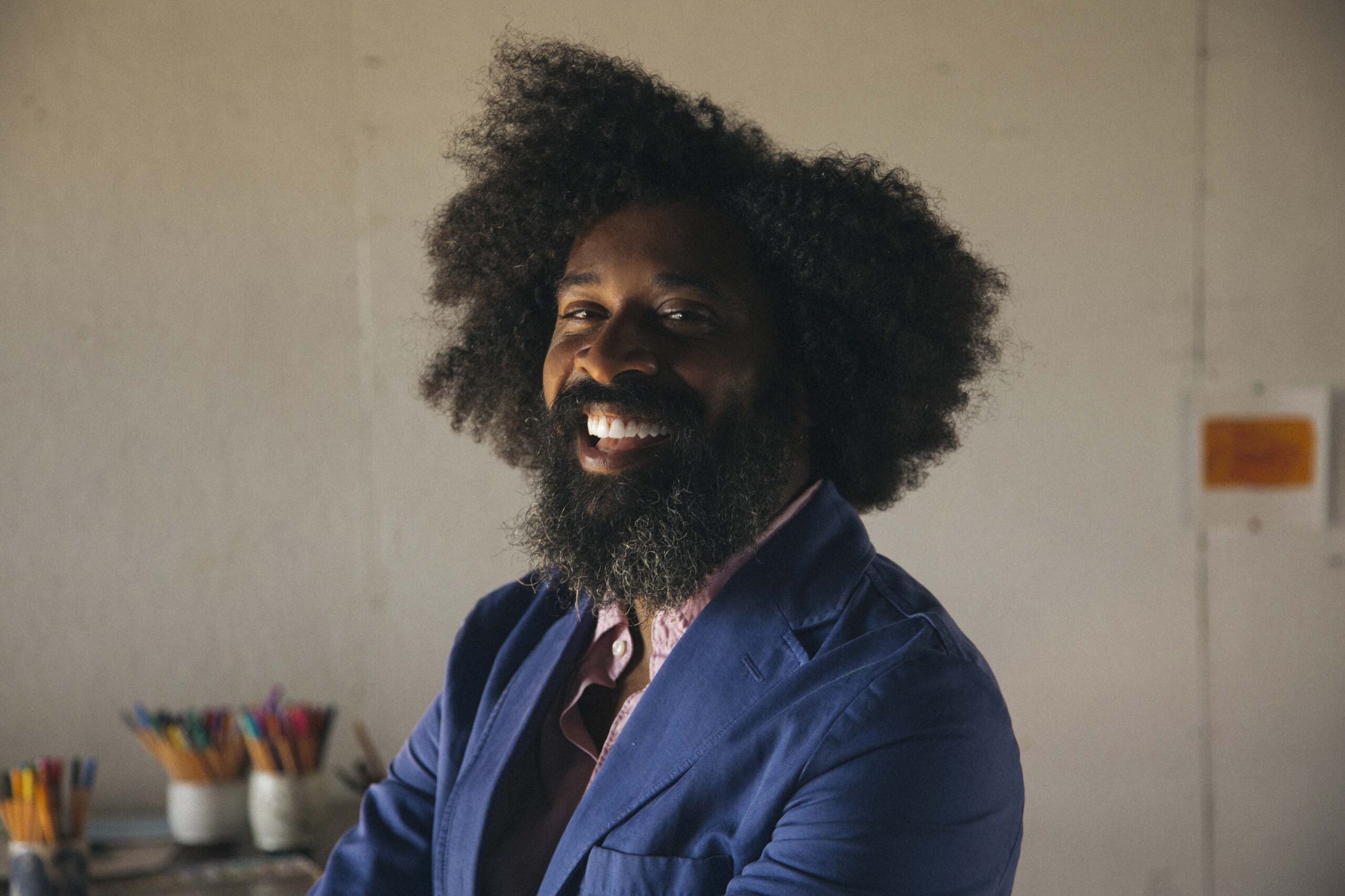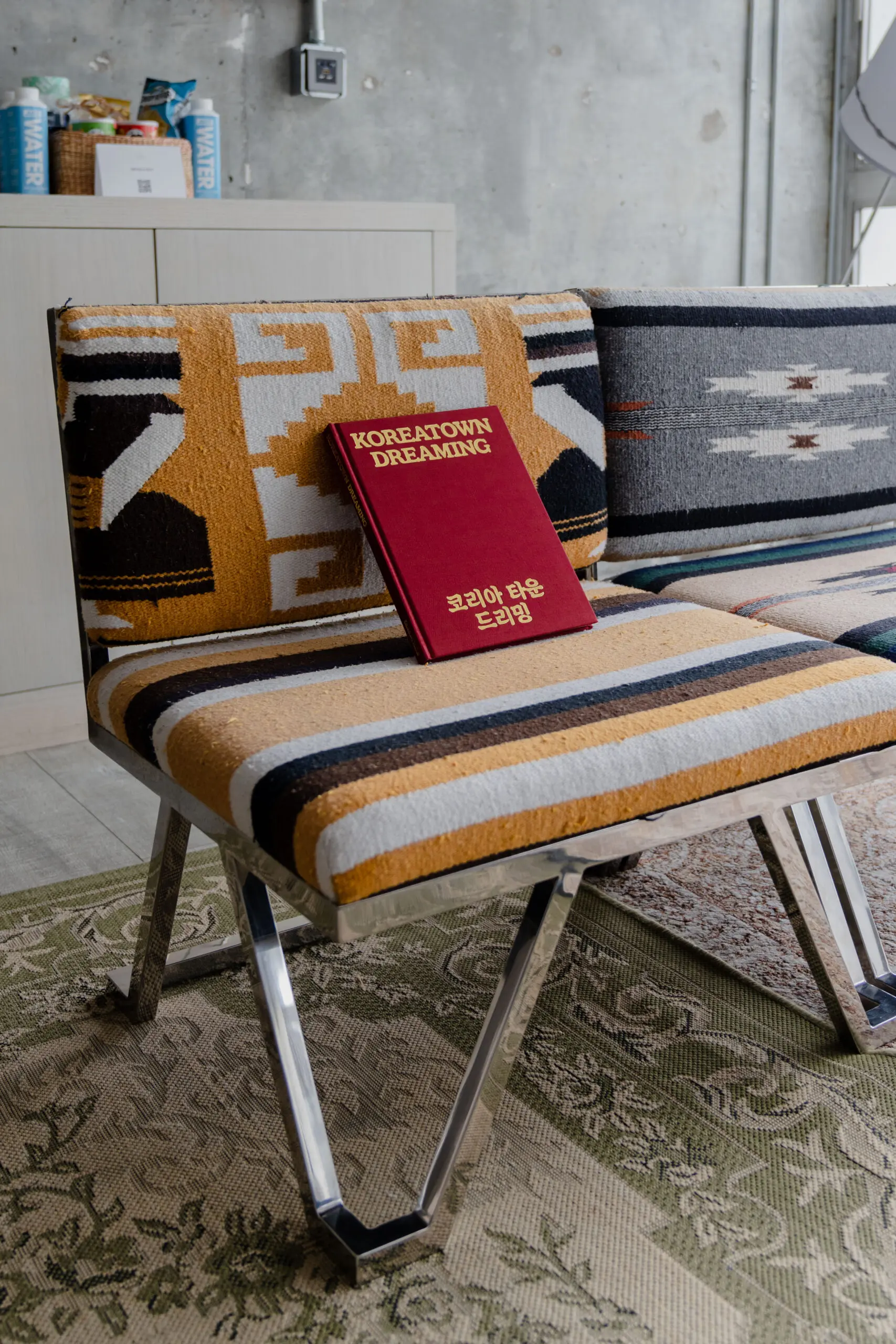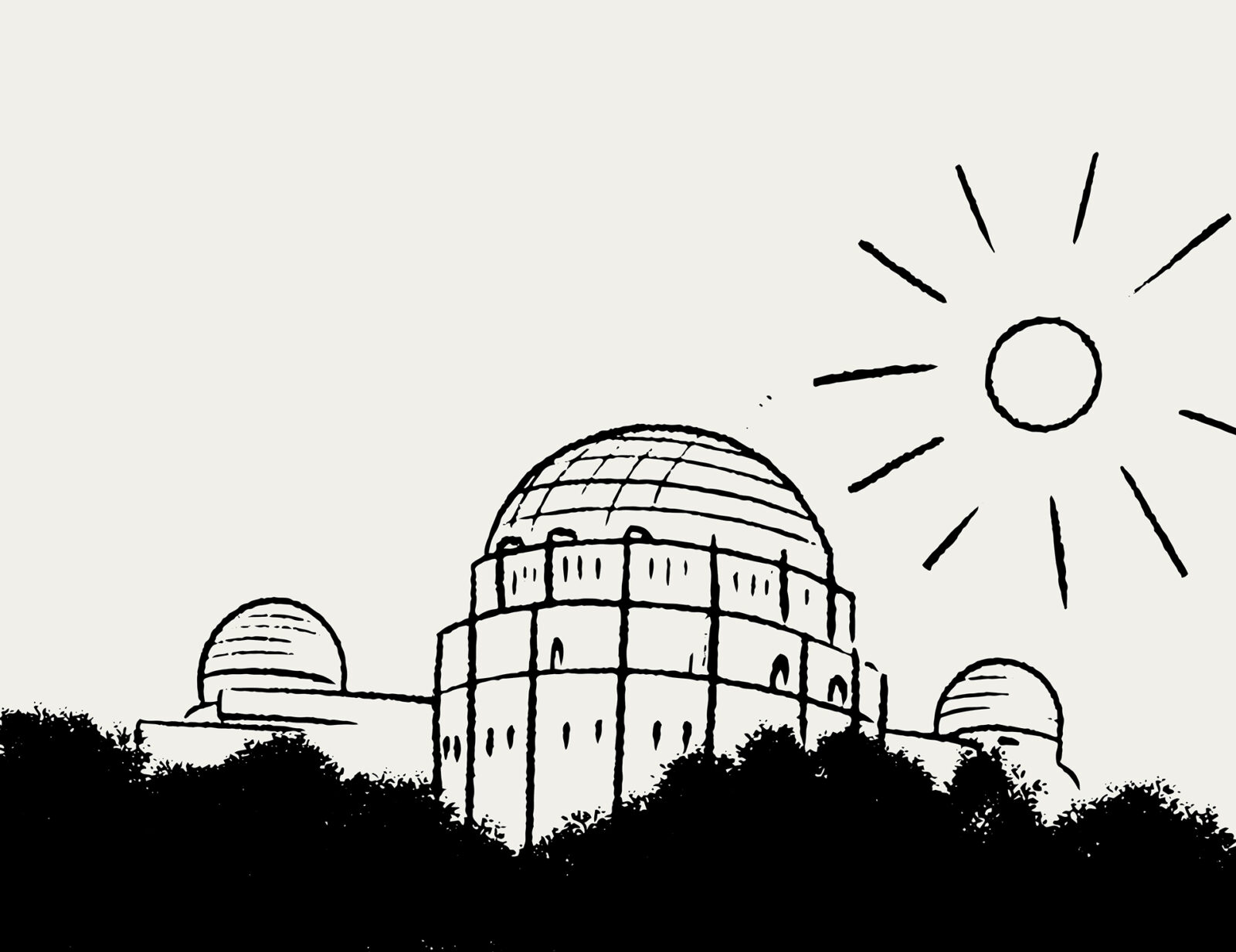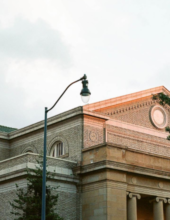Meet Our Neighbor, Jake Ricker
Words by Matthew Ininns
Images by Anna-Alexia Basile
It was a near-fatal bicycle crash that made Jake Ricker take photography seriously.

From the moment he landed on the ground, he documented it all—the shocked onlookers, sprinting paramedics, friends arriving at the hospital.
But really it all began on the road. Constantly on the move from a young age, skateboarding and touring with his band, Ricker just wanted to document all the strange and beautiful things he saw. He was gifted a Pentax K1000 by his uncle, took a film photography class in high school, and was immediately hooked. The physicality drew him in. He marveled at the process of light, time, and chemicals that became four-by-six memories his family would develop at pharmacies and stash away in envelopes.
As a bike messenger in San Francisco, Ricker rode with a film camera alongside his messenger radio, taking pictures of all the good, bad, sad, and funny he witnessed in his ten years zigzagging around the city. “Evidence of existence” he calls it. No special framing or embellished lighting, just blunt, raw frames from life on the street.
Searching for a project to fully devote himself to after his crash, Ricker took the bus to Golden Gate Bridge. The most photographed subject in San Francisco, Ricker felt the bridge was, in fact, completely unexplored beyond three worn-out angles, and he began to photograph it in 2018. Imagining a short-term, tranquil project where he could escape from the bustling city, Ricker soon uncovered the bleakness of the bridge as a suicide destination. About a year into the project, he began to experience the act firsthand. Ricker has since witnessed dozens of suicides—and known the agony of being the first to know about and report them.
He soon realized that he was uniquely capable of helping prevent these suicides, and it has become part of his mission to help those in need. “Some people run away from a fire, while other people run into it,” he explains.

From the almost 9,000 miles he’s walked along the bridge—some days literally from dawn to dusk—Ricker has learned how to recognize the signs of someone in distress. He’s developed personal relationships with the bridge patrol officers and has learned how to contact them discreetly, and, as a plainclothes passerby on the bridge, he is more approachable and relatable to those in need of help. He hopes to be the hand someone needs at their lowest point.
“Most people are happy to live comfortably between a four and a six,” Ricker says, describing the scale of human emotion. “I want to experience one to ten.” The full range of life—and he encounters it all on the bridge. Yes, he’s witnessed suicide, but he has also seen the joy of marriage proposals, graduation photos, and unforgettable family vacations.
Iconic in its color, architecture, and symbolism, Ricker maintains that the Golden Gate Bridge’s most unique features are the breadth of experiences it hosts and its ability to surprise: In his thousands of hours spent on the bridge, he still sees something new almost every time. Yesterday it was a father, son, and dog—in a custom-built cart—all riding a motorcycle across the bridge and weaving through traffic.

Ricker fantasizes about the next shot and laments the ones he’s missed. He once photographed every sunrise on the bridge for two months straight, only to miss, on Christmas morning, the exact moment he had been dreaming of. It was one of the few times he’s cried. Perhaps it’s the quest to get the next, perfect photo—to do the bridge justice—that keeps Ricker going. To date, he’s logged five years and thousands of rolls of film.
His plan was to shoot the entire five-year project on Kodak UltraMax 400—“One location, one camera, one film,” he says—but that’s become all the more difficult with pandemic-related supply issues. Kodak film prices have gone up sixfold since he began the project, if he can find the film at all. He’s gone from shooting around three rolls a day to only ten frames.
Ricker expects to wrap the project when the bridge’s upgraded suicide net is complete in mid-2023. It will be a significant milestone.
~
Support Jake Ricker’s efforts by donating your time or money to the Suicide Bridge Project. If you or anyone you know is in distress, call 988 to reach the 988 Suicide & Crisis Lifeline, a national network of local crisis centers open all day, every day.

